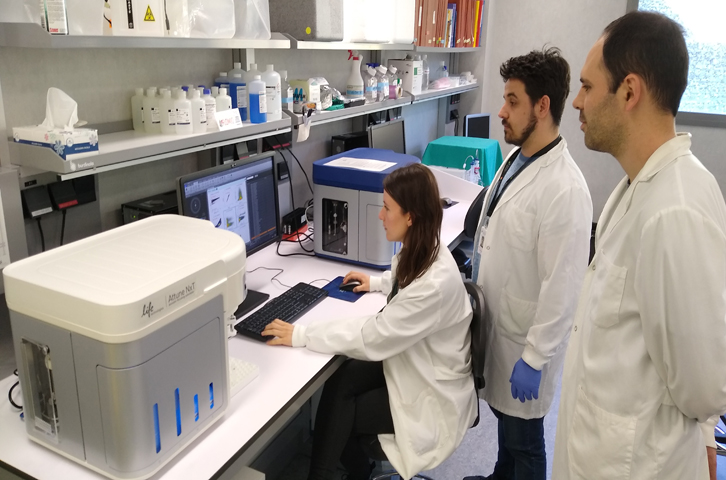Spanish Researchers Develop New Protocol To Identify Leukemic Stem Cells

Acute myeloid leukemia is one of the most common blood cancers in adults. Chemotherapeutic strategies have not changed significantly in recent decades and, despite the fact that most patients achieve complete remission, a large proportion of these patients fall and / or have resistance to chemotherapy.
It is known that the origin of these relapses lies in the existence of very minority leukemic cells, resistant and capable of developing the disease again: leukemic stem cells. Although they have been studied at the genetic and phenotypic levels, it is extremely difficult to identify and isolate them. Therefore, resolving this population of cells is of great importance in order to develop targeted therapies and to reduce the risk of relapse and resistance to therapy.
The Functional Cytomics Research Group has found that the leukemia cells of patients with acute myeloid leukemia at the time of diagnosis exhibit different levels of alkaline protein phosphatase enzyme activity. Those patients with an increased number of leukemia cells with high enzyme activity represent a group with a worse prognosis, with lower rates of remission, more relapses and resistance to treatment, and lower survival. This phosphatase activity thus helps to identify cell subpopulations with leukemic stem cell characteristics and so, to those patients who are more likely to experience recurrence of the disease or resistance to chemotherapeutic treatment.
To detect alkaline phosphatase activity, the bone marrow (containing leukemic cells) of patients with acute myeloid leukemia was used and measured directly on living cells with fluorescence methods such as flow cytometry, to obtain valid results in less than two hours from the receipt of the pathological samples. If the enzyme activity is high, the malignant cells become more fluorescent, with the advantage of measuring large numbers of cells very quickly.
These findings highlight the relevance of alkaline phosphatase enzyme activity to leukemic stem cell identification and patient risk prediction, as well as to the development of new targeted therapies directed against this enzyme.
Campus ICO/Germans Trias i Pujol
Universitat Autònoma de Barcelona
References
Laura G. Rico, Jordi Juncà, Michael D. Ward, Jolene A. Bradford, Jordi Petriz (2019). Flow cytometric significance of cellular alkaline phosphatase activity in acute myeloid leukemia. Oncotarget. DOI: 10:6969-6980

